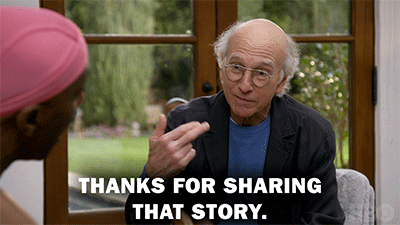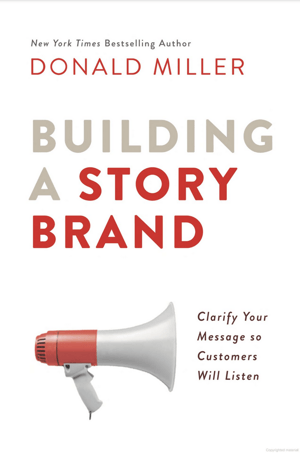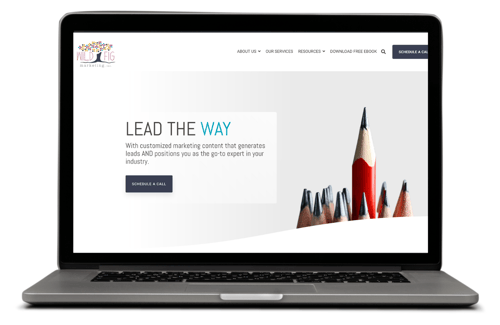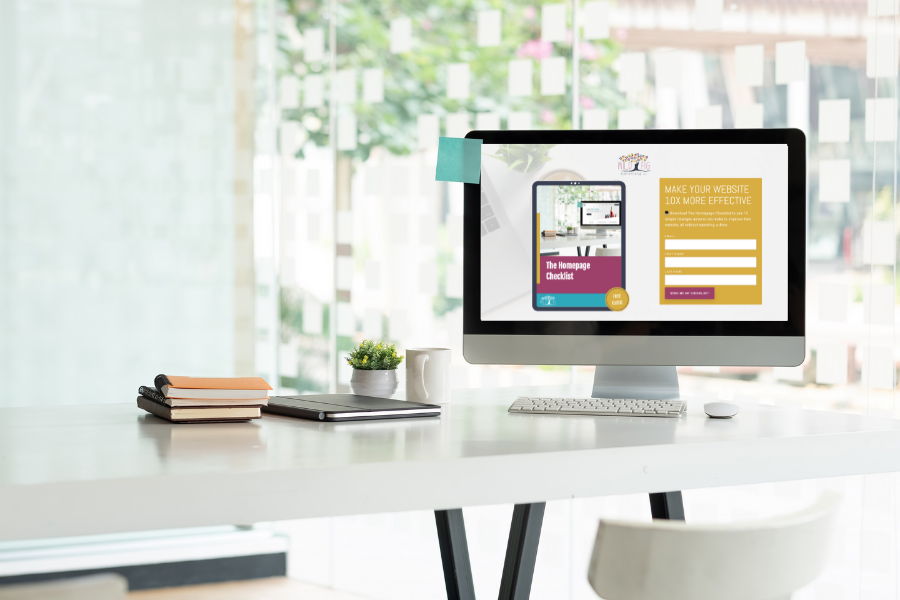How To Use StoryBrand To Convert More Prospects From Your Landing Page
Whether you’re a B2B or B2C company, everything you do revolves around one primary objective: to make a sale. Yes, a website is a critical part of...
5 min read
 Allie Krueger
:
June 5, 2023
Allie Krueger
:
June 5, 2023

Ever tripped over your tongue when trying to explain what you do at a networking event or cocktail party?
Do you struggle to find a quick, clear way to sum up your company’s offering, whether it’s a product or service or both?
When you do finish explaining what your company does, do listeners often have this look on their face? 👇

This is a classic case of having a brand message that’s too complicated. People have short attention spans, so if you want people to listen to you and remember you and what your company does, you need to keep your explanation:
Luckily, the StoryBrand Framework offers a solution to this problem. If you aren’t familiar, the StoryBrand Framework uses the principles of storytelling for business marketing. (Learn more about how to use the StoryBrand Framework here!)
Using this framework, we will transform your long-winded explanation of what your company offers into a concise, interesting statement that makes people eager to know more. This statement is known as a “one-liner.”
A one-liner is a statement, usually one or two sentences long, that describes what your business is and what it offers.

In his book, “Marketing Made Simple,” StoryBrand creator Donald Miller writes, “[A one-liner] is the most powerful tool you can use to make customers curious about your brand.”
But what makes it so powerful?
Just a couple sentences can peak listeners' interest, generate leads, and land clients and customers. So, are you ready to learn how to create a one-liner of your own?

“Marketing Made Simple” Examples:
Notice that in each of these examples, we’re starting with the target audience, e.g., “parents” or “businesses.” Then we focus on the issue, e.g how parents “get stressed” or businesses “lack the time/expertise.” Finally, we get specific, and state what exactly is stressing parents out, or what businesses lack the time/expertise to do.
To begin writing your one-liner, ask yourself the following questions:
Once you’ve answered these questions, you can “plug-and-play” to write the first part of your one-liner statement.
Once you’ve clearly stated the problem, now you can:
According to Donald Miller, after you’ve stated the problem, “A subtle anticipation grows in your customer’s mind and they lean in (rather than tune out) when you let them know what you offer.” Once you’ve got them “leaning in,” you want to reward them with a satisfying solution!
Examples:
Notice how the above examples not only show the product/offering, i.e., “fun and welcoming office” and “amazing website,” but they also tack-on an extra benefit: “puts kids at ease” and “affordable price.”
Pro-Tips: When writing, keep it simple. Don’t try to get too clever or use complex language, as this can confuse your reader and distract them from what you’re actually selling. Also, make sure to use your company name in the solution! You want your brand to be associated with the solution to the customer’s problem.
Okay, so you’ve clearly stated the problem and the solution. But your story isn’t complete without its final act. In the third part of your one-liner you will:
The final component of your one-liner should illustrate what the customer gets from the solution and what their life will be like afterward.
Examples:
Notice that in each of these examples, you are acknowledging what the customers have overcome and what they’ve gained. Keep these two things in mind as you finish writing your one-liner.
Pro-Tips:
Once you’ve written your one-liner, commit it to memory so you can use it verbally whenever you need to! Here are some other ways that you can start using your one liner immediately:

For more information and great ideas for how to use your one-liner, check out marketingmadesimple.com, or buy Donald Miller’s book, “Marketing Made Simple.”

At Wild Fig Marketing, we’re StoryBrand certified, which means we’re experts in helping brands tell their stories in a way that generates leads, wins customers, and earns revenue. We’ve helped numerous companies just like yours revamp their content, websites, and sales collateral so they can waste less time trying to convince prospects and more time landing new clients.
If you’re curious about how we can help you clarify your brand’s messaging, schedule a 15 minute exploratory call with our VP of Opportunities, Jen, today. We’ll discuss your current messaging, your brand goals, and determine if you’d be a good fit for our services. We can’t wait to hear from you!

Whether you’re a B2B or B2C company, everything you do revolves around one primary objective: to make a sale. Yes, a website is a critical part of...

Why do customers walk away without buying?

Originally posted Oct 2017; Updated Oct 2023 When you think of the components of a great story, what elements come to mind?